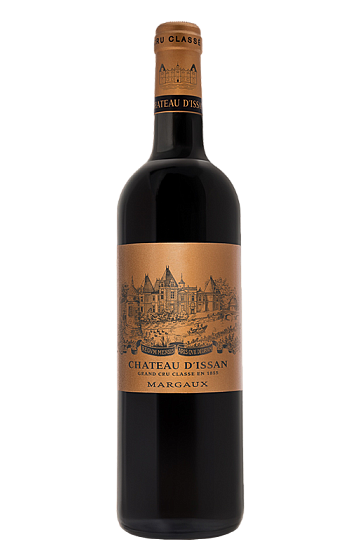Blason d'Issan 2024 en Primeur
Fiche technique
L'avis des experts
This vintage shows lovely minerality and excellent red currants, red cherries and stones. Such vibrancy, youthfulness and energy. Not a wine of immense depth, but I like the chalky tannins that provide vibration and length. Mostly cabernet sauvignon with merlot, malbec and petit verdot.
Dark chocolate, blackcurrant leaf. Some savoury wet earth, chocolate tobacco elements and some crushed stones aromatics. Chewy, bright and tangy - this has a good fleshy aspect with concentrated fruit and lifted aromas. Clean and focused with blueberry and some red cherry with black chocolate and liquorice aspects too. It’s svelte for sure, but refined with super fine tannins and an overall sense of charm. There’s juiciness all the way to the finish too which is great. 2% Malbec and 1% Petit Verdot complete the blend. 3.20pH. 50% new oak.
Dark ruby, purple reflections, delicate edge brightening. Fine herbal savouriness, dark forest berries, fine heart cherry fruit, inviting, charming bouquet. Taut, tightly woven, mineral, red currants, balanced and delicate, very typical Margaux, salty finish, promising. (12.9% Vol., 50% new wood).
The 2024 Château Issan is composed of 64% Cabernet Sauvignon, 34.5% Merlot, and small amounts of Petit Verdot and Cabernet Franc. Offering notes of currants, spice, cedar pencil, and spring flowers, it's medium-bodied and ultra-pure on the palate, with fine-grained tannins and a finesse-driven style. The balance here is spot on.
Lovely inviting nose of black fruit and fresh herbs like thyme and bay. Fresh acidity and a juiciness in the mouth with very supple and quite low tannins, this will be very accessible after release, and neatly captures what could be accomplished in this difficult vintage. Nothing green or hard edged here, which is relatively exceptional for the second wines.






Nos membres n’ont pas encore laissé de commentaires pour ce millésime. Cliquez sur les millésimes précédents pour accéder aux commentaires.